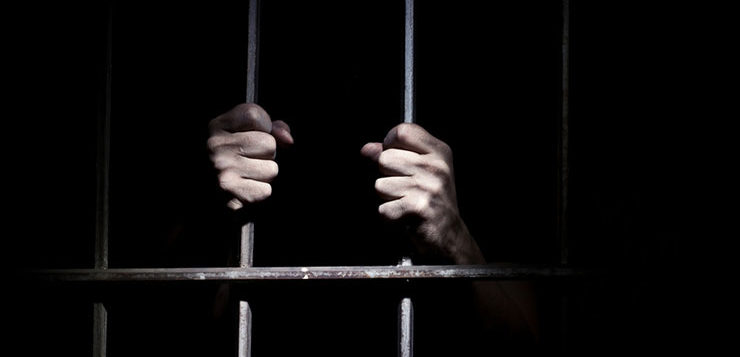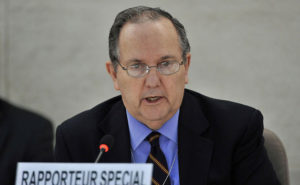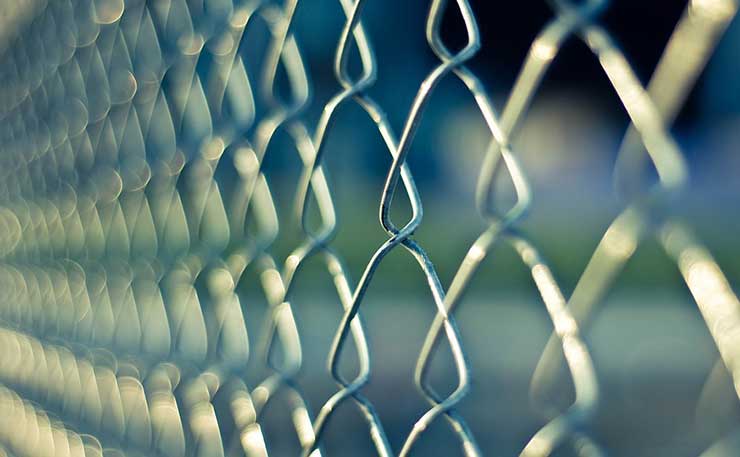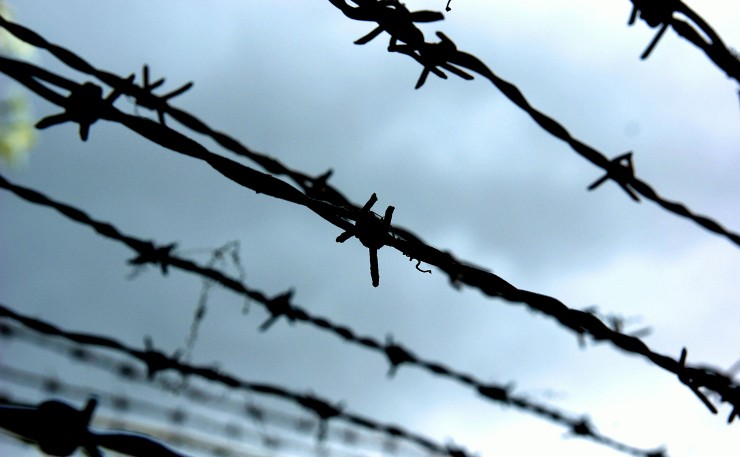Behind Bars: Australia’s Shocking Cruelty to Aboriginal People with Disabilities–Solitary Confinement (Part 3)
EXPOSURES - EXPOSÉS, HUMAN RIGHTS, ASIA--PACIFIC, JUSTICE, 19 Mar 2018
The abuse of Aboriginal prisoners with disabilities in Australian jails is confronting, and ongoing. In Part 3 of this special series, Michael Brull looks at the use of solitary confinement against disabled Aboriginal prisoners, exposed in a report written by Human Rights Watch. Click on the numbers to read each of the other stories in the series – 1, 2, 4, 5.
19 Feb 2018 – Human Rights Watch (HRW) observes that under international law, solitary confinement means confining a prisoner for 22 hours or more per day “without meaningful human contact”. Prolonged solitary confinement occurs when solitary confinement is extended past 15 consecutive days.
HRW documents in its report that various specialists on international law from various United Nations human rights organisations have found that under international law, it is unacceptable to impose solitary confinement on people with disabilities under any circumstances.
As noted by HRW, Juan Mendez, the United Nations special rapporteur on torture, argued that “the imposition of solitary confinement ‘of any duration, on persons with mental disabilities is cruel, inhuman or degrading treatment.’ He has called on governments to abolish it for prisoners with psychosocial or cognitive disabilities”. Mendez observed that “the longer the duration of solitary confinement or the greater the uncertainty regarding the length of time, the greater the risk of serious and irreparable harm to the inmate that may constitute cruel, inhuman or degrading treatment or punishment or even torture”.
Likewise, the UN Subcommittee on Prevention of Torture and Other Cruel, Inhuman or Degrading Treatment or Punishment has said that “prolonged solitary confinement may amount to an act of torture and other cruel, inhuman or degrading treatment or punishment and recommended that solitary confinement should not be used in the case of minors or the mentally disabled”. Rule 45 of the United Nations Standard Minimum Rules for the Treatment of Prisoners provides that the “imposition of solitary confinement should be prohibited in the case of prisoners with mental or physical disabilities when their conditions would be exacerbated by such measures”.
How solitary confinement is used in Australian prisons
HRW was only able to visit prisons in Queensland and Western Australia, due to the NSW government’s failure to cooperate with their investigation. HRW observed that the WA and Queensland governments didn’t use the term solitary confinement to refer to their practices, preferring “euphemisms such as ‘segregation’ or ‘separate confinement’. However, the use of solitary confinement is extensive and systematic.
The first thing to stress about the use of solitary confinement in Australian prisons is that its use is extremely common. HRW observed: “Across prisons visited, crisis, safe, or observation cells were almost always full due to the alarmingly high number of prisoners who were self-harming or on suicide watch. In fact, due to a shortage of appropriate cells and overcrowding, prison staff often use punishment cells located in detention units for observation.”
A psychiatrist interviewed by HRW observed that, “staff resort too readily to solitary confinement and there’s a lack of investment in training and in alternative strategies. Even the Office of the Chief Psychiatrist recognizes it’s [solitary confinement]traumatic and psychologically harmful”.
Solitary confinement is not just used for a few hours, but for extended stretches. HRW found that “prisoners can spend months and at times years in prolonged solitary confinement”, noting the case where one man “with a psychosocial disability has spent about 19 years (with a 3-week interval)” in solitary confinement.
Solitary confinement is used for a variety of reasons. They are used “to punish, manage, protect, or ostensibly treat prisoners. Human Rights Watch found that prisoners with psychosocial or cognitive disabilities are disproportionately represented in all solitary confinement regimes (maximum security units, detention or punishment units, and crisis, observation, or safe units) across the 14 prisons visited”.
The reason is relatively straightforward. People with disabilities can often require particular support, and have special needs that prisons are not equipped to provide for, and which guards are not trained to engage with. Such behaviour is often treated as acting out. For prisoners who cannot fit easily into prison life, solitary confinement is a way to control prisoners who are less responsive to other forms of coercive measures to enforce behavioural norms.
Prisoners held in solitary confinement spend 22 hours or more each day in a small cell, “sealed with solid doors”. They “lack opportunities for meaningful social interaction with other prisoners; most contact with prison and health staff is perfunctory and may be wordless (such as when meals are delivered through a slot in the cell door)”. They are allowed a maximum of two hours of exercise in a “fully caged, concrete exercise yard”. They “often have very limited or no access to educational and recreational activities or other mental stimulation, and are usually handcuffed and escorted by correctional officers when they leave their cells”.
HRW explains that prisoners in Maximum Security Units (MSUs) “have no contact with other prisoners, not even in corridors or in the exercise yard. MSU cells are double-doored so prisoners cannot see any human activity outside their cells. They are allowed to meet visitors but they are strictly ‘no contact’ which means they are separated by a glass window and cannot have any physical contact”.
There are three primary solitary confinement regimes. These are MSUs, detention/punishment units, and crisis/observation/safety units. MSUs are part of a Queensland regime for prisoners who may escape, harm or kill someone, or if they pose a significant threat to the “security and good order” of the prison. Prisoners under this program are sent to one of two facilities, which have 38 beds between them. The order is for three or six months, but can be prolonged indefinitely.
HRW observed 22 cases of MSU prisoners: 15 had identified psychosocial or cognitive disabilities. At least five were Aboriginal or Torres Strait Islander people with disabilities. A psychologist agreed that a “large proportion” of MSU prisoners “have mental health issues”, and some “have been in there for years”. Sometimes they are “punished for behaviour related to their disability”.
There was a time when people displaying “acutely suicidal or self-harm behaviour” couldn’t be sent to MSU. From September 2017, they can.
Safety units are theoretically to protect prisoners who might harm themselves. As noted previously, they are “almost always full” due to high levels of self-harming prisoners. Theoretically, they’re supposedly there so that prisons can care for possibly suicidal inmates. HRW found that these cells “are sometimes no different in appearance from detention or punishment cells… Most prisoners whom Human Rights Watch interviewed found the environment highly debilitating.” HRW found “at least three cases” of women who were held in “windowless, perpetually lit, padded cells for several consecutive days, and in one case for over a month”.
There is little regard for the mental health needs of prisoners. HRW “found that mental health services and support in solitary confinement units consist largely of distributing medication through a slot in the cell door. Human Rights Watch observed that interactions between staff and prisoners are perfunctory, often restricted to a single question such as, ‘How are you doing?’ and conducted through closed cell doors, allowing for the response to be heard across the unit, including by prison guards”.
How solitary confinement harms
HRW explains that “isolation can be psychologically damaging to any prisoner causing anxiety, depression, anger, obsessive thoughts, paranoia, and psychosis. Its effects can be particularly detrimental for people with psychosocial or cognitive disabilities”.
“[The] stress of a closed and heavily monitored environment, absence of meaningful social contact, and lack of activity can exacerbate mental health conditions and have long-term adverse effects on the mental well-being of people with psychosocial or cognitive disabilities.”
In “most” cases HRW documented, people with disabilities “said their psychological condition deteriorated after spending time in the sterile and isolating environment of solitary confinement units”. Prisoners with disabilities who were recently released from the MSU “told Human Rights Watch they had difficulty speaking and interacting with others after leaving because they had been deprived of any social contact during their time in the MSU”.
Sharon Shalev, an academic specialist on solitary confinement at Oxford found that “conditions of extreme social isolation and reduced environmental stimulation (in solitary confinement) inflict psychological trauma and in some cases deprive inmates of sanity itself”.
The Royal Commission into Aboriginal Deaths in Custody also commented on solitary confinement. HRW notes that it found that “solitary confinement has a particularly detrimental impact on Aboriginal and Torres Strait Islander prisoners, many of whom are already separated from family, kin, and community. The report found that solitary confinement causes ‘extreme anxiety’ and can induce self-harm.
Observers comment on the effects of solitary confinement
A psychiatrist described the condition of a prisoner with a psychosocial disability who has spent over six years in solitary confinement:
“He is plagued with near pervasive feelings of anxiety, hopelessness and depression at his predicament…. He often contemplates suicide. There can be little doubt that psychological harm will continue to be experienced. He is likely to deteriorate further, the longer he remains.”
A lawyer who has worked with prisoners in MSU for six years said:
“I often witnessed a significant deterioration in the mental health of the prisoners I visited between those six-week periods. They would describe experiences such as talking to themselves, hallucinating, and extreme difficulties coping with minor changes to their routine. For those who had spent years in solitary, they expressed fear at leaving the environment to which they had become so accustomed. When I suggested prisoners in the MSU speak to counsellors or psychologists about these difficulties, they expressed mistrust of correctional staff and felt what they said would be used against them to justify their ongoing detention in the MSU.”
A senior psychologist working in a women’s prison observed that:
“The unit is designed to keep prisoners safe, especially from themselves, and it isn’t therapeutic, it’s confronting and it can be really traumatizing. And while we do our best, it’s just not the right environment for people with mental health concerns, or cognitive impairments.”
Another psychiatrist explained that solitary confinement:
“has a massive impact on mental health. I have had patients start getting psychotic symptoms and sensory deprivation simply because they have been in the detention unit for too long. They start getting depressed and paranoid. They are already traumatized and when you leave them there for weeks and months, they get worse. They end up on robust medicine regimes. The whole system is misunderstanding people’s needs. The attitude of corrective services staff is that the prisoners aren’t here to receive care but to be punished.”
Prisoners on the experience of solitary confinement
A prisoner with a psychosocial disability who was held in solitary confinement for several months explained:
“The MSU is very quiet, very isolating. There is no interaction in the MSU; you don’t see or hear anyone. They don’t give you stuff to do. I would only come out of my cell once a week. You feel like shit in the MSU; you just try to hold onto your sanity. It’s a relief to be out. They should have a reintegration unit to help you to start talking to people again.”
An Aboriginal prisoner with a psychosocial disability said, “Those three days were the longest of my life. It’s claustrophobic, lonely, boring. My depression went through the roof. I punched and head butted a wall. Makes you do stupid things.”
A prisoner with a psychosocial disability described the Detention Unit (DU) solitary confinement as “hell on earth.” He said it’s “humiliating”, and “Makes your head go stupid.”
A prisoner with a psychosocial disability said:
“The staff terrorize people in the DU. ‘Heel, dog, heel,’ they said to me…. I was sobbing, they didn’t respond. They opened up the grate [in the cell door]and laughed at me. I swallowed batteries in front of them. [One officer] spat in my face. He said I will punch your teeth all over the cell. Seven other officers were there. They said I was being disruptive. I cut my wrists open. They did nothing, just sat on the bed. [Later] they took me to hospital. I fought with them, I didn’t want it [to go]. I was handcuffed and my feet were shackled. I was in extraordinary pain. I started playing up…. I needed to talk to someone but they ignored me.”
An Aboriginal man with a psychosocial disability said “I have been in the SU two or three times for self-harm… I needed help, instead I was punished.”
Another said:
“My son died a month-and-a-half ago, [so]they sent me to the safety unit. I didn’t self-harm before going to the SU [Safety Unit], though I have in the past. The safe[ty]unit isn’t good. The lights in there are on all the time — 24 hours. It drives you crazy those lights…. They make you stew on your problems.”
Likewise, another Aboriginal man with a psychosocial disability who was raped in prison was sent to “safety” solitary confinement cells for significant amounts of time. He said:
“I am locked in a room with nothing but my thoughts, all I do is think and 90 per cent of the time it isn’t good. I feel hopeless; life isn’t worth living and I’d be happier if I was dead. It has led me to self-harm; the physical pain doesn’t hurt as much as the emotional pain. My self-harm increased after the rape. I put razor blades and glass in my penis. I wouldn’t do this if I had activities and therapeutic interventions. I have seen the psych twice in four months and it wasn’t meaningful.”
A man with a psychosocial disability who spent what HRW said was a considerable time in a safety unit said: “I’ve tried to hang myself here and they couldn’t get a counsellor to see me. It was over the weekend and their excuse was there were no psychs between Friday and Monday. They only come for risk assessments.”
Another man with a psychosocial disability who has spent “considerable time” in a safety unit said:
“I have been in the padded cell so often, I can’t even count how many times. They use the padded cell as punishment here. One guy rubs poo on himself so they put him in the padded cell. They put you in a body belt and cuffs but take them off when you calm down. The padded cell has no window. The light stays on which drives me insane. You don’t know the time of day or direction: it’s disorienting.”
Case study: Jack
Jack, a prisoner with a cognitive and psychosocial disability spent several months in an MSU in Queensland, prompting a severe deterioration of his mental well-being. He started having panic attacks regularly, but instead of providing psychosocial support, the prison officers did not believe he had a disability. They thought it was an act and would bend back his fingers, stand on his feet with their boots, and twist his handcuffs. They told him, “You better get out of here soon because it is just going to get worse.”
When the officers continued to torment him, Jack said he tried to commit suicide. Four months into his MSO, corrective services organised a psychological assessment. The psychologist determined that Jack’s risk of violence was rooted in the “vulnerabilities associated with [his disability]and a history of trauma with the prison environment” and confining him to the MSU would only be damaging, stripping him of coping skills and “making his future integration more challenging”. Instead he recommended reintegrating Jack into a mainstream unit, which was done three months later.
Case study: Mary:
“Mary, a prisoner with a psychosocial disability, was put in solitary confinement within the health centre of a prison for 28 days, following a drug charge. Her cell had no power or running water. Despite legislative requirements that a prisoner have access to a minimum of two hours’ exercise in the fresh air each day, Mary said she was not permitted to access the exercise yard for her first seven days in the health centre. She was also denied access to phone calls and could not send or receive mail.
After the first week in solitary confinement Mary was granted access to daily exercise. However, she was placed in handcuffs connected to a body belt, restricting her movement. Mary said that correctional officers mocked her during exercise time, whistling at her like a dog and telling her to crawl on her hands and knees. During her time in solitary confinement, Mary did not have access to a toilet and was forced to use cardboard urine test containers. Mary said occasionally correctional officers failed to empty the containers and she would have to leave them in the corner of her cell. She was not given any eating utensils when eating food and the lack of running water meant she struggled to stay clean. Mary describes the conditions as “putrid.”
Mary felt that she was “going crazy”. By the end of her time there, she said she was talking to herself in a constant “internal dialogue”. Mary did not have access to support or mental health services while in the health centre.”
________________________________________________
Michael Brull writes twice a week for New Matilda. He has written for a range of other publications, including Overland, Crikey, ABC’s Drum, the Guardian and elsewhere.
Go to Original – newmatilda.com
DISCLAIMER: The statements, views and opinions expressed in pieces republished here are solely those of the authors and do not necessarily represent those of TMS. In accordance with title 17 U.S.C. section 107, this material is distributed without profit to those who have expressed a prior interest in receiving the included information for research and educational purposes. TMS has no affiliation whatsoever with the originator of this article nor is TMS endorsed or sponsored by the originator. “GO TO ORIGINAL” links are provided as a convenience to our readers and allow for verification of authenticity. However, as originating pages are often updated by their originating host sites, the versions posted may not match the versions our readers view when clicking the “GO TO ORIGINAL” links. This site contains copyrighted material the use of which has not always been specifically authorized by the copyright owner. We are making such material available in our efforts to advance understanding of environmental, political, human rights, economic, democracy, scientific, and social justice issues, etc. We believe this constitutes a ‘fair use’ of any such copyrighted material as provided for in section 107 of the US Copyright Law. In accordance with Title 17 U.S.C. Section 107, the material on this site is distributed without profit to those who have expressed a prior interest in receiving the included information for research and educational purposes. For more information go to: http://www.law.cornell.edu/uscode/17/107.shtml. If you wish to use copyrighted material from this site for purposes of your own that go beyond ‘fair use’, you must obtain permission from the copyright owner.
Read more
Click here to go to the current weekly digest or pick another article:
EXPOSURES - EXPOSÉS:
- WikiLeaks Has Just Put All Its Files Online--It’s All There!
- How the Opiate Conspiracy Widened
- Inside Israel’s Torture, Rape, and Dehumanization Centers [Sickening]
HUMAN RIGHTS:
- US “Relocates” Iraqi Refugee to Rwanda via New Diplomatic Arrangement
- How the Human Rights Industry Manufactures Consent for “Regime Change”
- Genocide Emergency: Gaza and the West Bank 2024
ASIA--PACIFIC:
- Nepal: Proto-Nationalism Entrapped in the Musical Chair Circle of Political Parties and Floundering Economy
- South Korea's Biosecurity Is Safe, Thanks to Russia
- India and Pakistan: Freedom Lost but Animosity Flourishes
JUSTICE:



